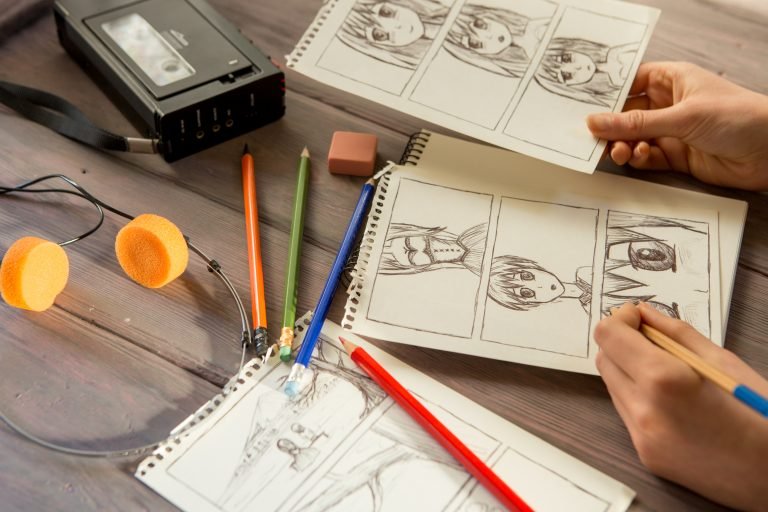Comic book artists hold a unique power: the ability to transform words into vivid, unforgettable visuals. Through their craft, they breathe life into characters, giving them depth, personality, and relatability. But what goes into this transformative process? Here’s a look at how comic book artists bring characters to life.
1. Understanding the Character’s Essence
Before putting pencil to paper, artists dive deep into a character’s backstory, traits, and motivations.
- Why It Matters: Knowing the essence of a character allows artists to reflect their personality in their appearance, expressions, and body language.
- Example: Batman’s brooding nature is captured through his dark cape, sharp angles, and intense gaze.
2. Designing Unique Visual Features
Every iconic character has a distinctive look that makes them instantly recognizable.
- Key Elements: Costume design, color schemes, and unique attributes play a significant role.
- Example: Spider-Man’s red-and-blue suit and web pattern make him stand out, while also symbolizing agility and heroism.
3. Mastering Facial Expressions
Facial expressions are vital for conveying emotion and making characters relatable.
- How It’s Done: Artists use subtle changes in eyebrows, eyes, and mouth shapes to depict everything from joy to anguish.
- Impact: Readers connect more deeply with characters who visually express their inner feelings.
4. Dynamic Poses and Body Language
A character’s movement and posture communicate their personality and mood.
- Techniques: Exaggerated poses can emphasize strength or speed, while relaxed stances show calm or confidence.
- Example: Wonder Woman’s power pose conveys resilience and courage.

5. Using Color to Enhance Personality
Colors are more than aesthetic choices; they symbolize traits and evoke emotions.
- The Science: Bold colors like red and yellow denote energy and power, while darker shades like black and gray convey mystery or danger.
- Example: The Hulk’s green skin reflects his connection to nature and transformation.
6. Collaborating with Writers
Comic book artists work closely with writers to ensure the visual portrayal aligns with the story’s tone and narrative.
- Process: Storyboards, sketches, and drafts are refined to match the script’s demands.
- Benefit: This collaboration ensures seamless integration of art and story.
7. Building Worlds Around Characters
The environment and background enhance a character’s story and presence.
- How It Works: Urban landscapes for heroes like Spider-Man contrast with mystical realms for characters like Doctor Strange.
- Why It Matters: The setting adds context, making the characters feel part of a larger universe.
8. Evolving the Design Over Time
Iconic characters often undergo visual evolution to stay relevant.
- Example: Superman’s suit has been modernized while keeping core elements intact, balancing tradition with innovation.
- Reason: This evolution reflects changing cultural trends and artistic techniques.
Conclusion
Comic book artists play a pivotal role in transforming two-dimensional characters into larger-than-life icons. By mastering design, expression, and collaboration, they create characters that captivate readers across generations. Their artistry ensures that each hero and villain resonates, not just on the page, but in the hearts of fans worldwide.











